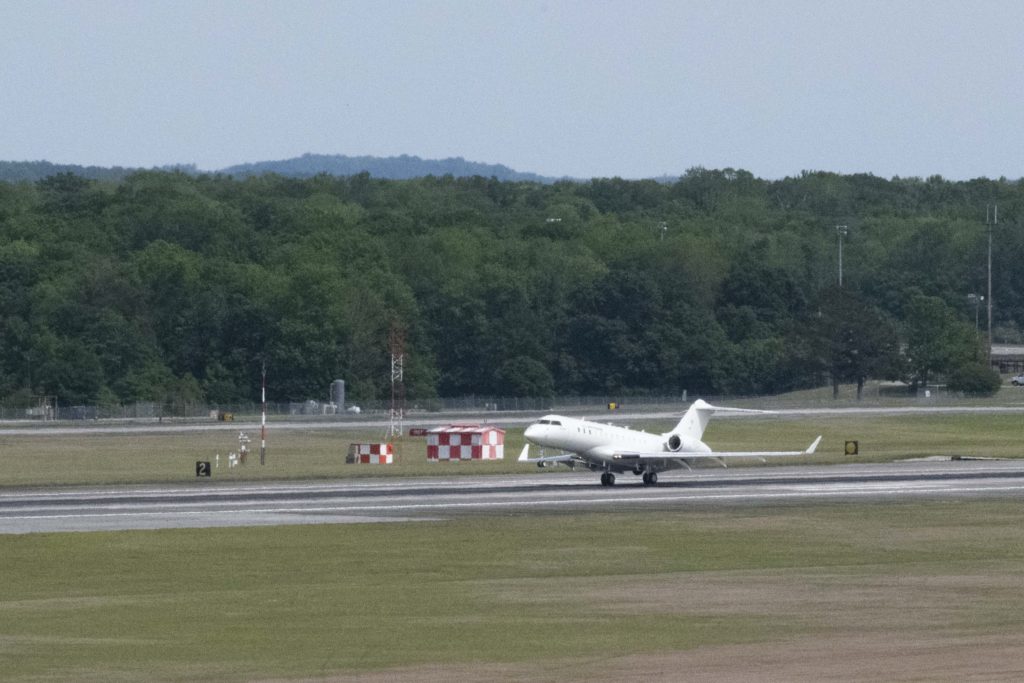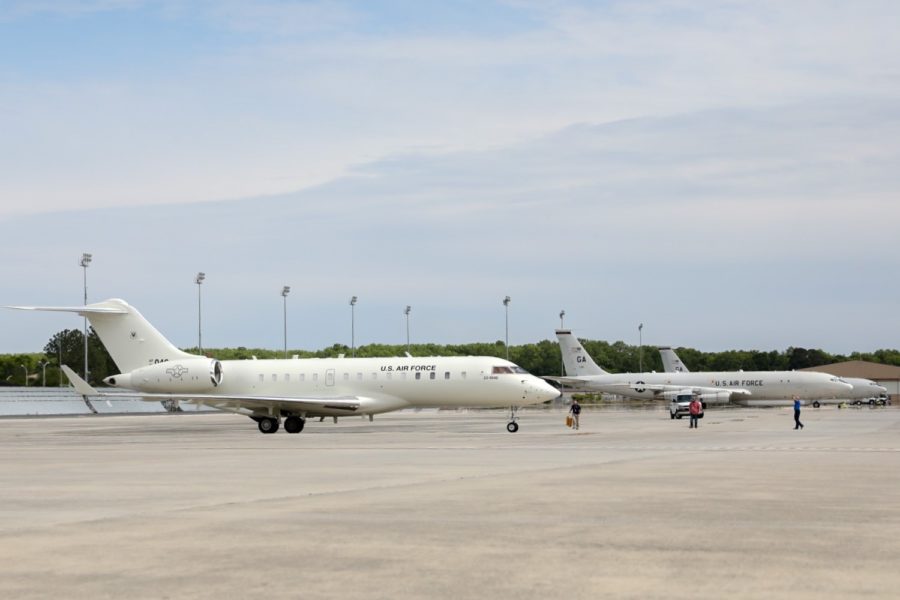Robins Air Force Base, Ga., kicked off a new era late last month when its first E-11A arrived.
The modified business jet, which landed April 24, is equipped with a Battlefield Airborne Communications Node (BACN) that serves as a communication relay commanders can use to exchange information with air, ground, and sea assets both across the joint forces and with allies and partners.
Though the E-11A has been in combat service for the Air Force since 2008, when it helped troops in Afghanistan overcome communication limitations in rugged terrain, its arrival at Robins is a milestone as the base transitions from the retiring E-8 JSTARS aircraft to a new set of missions. In February, the base activated the 18th Airborne Command and Control Squadron, which will operate the E-11A.
“We basically extend the range of a lot of communication systems, be they radio or data link, and then we allow people that have different types of radios and data links to be able to communicate with each other that otherwise would not be able to,” Lt. Col. Scott Sevigny, commander of the 18th ACCS, said in a press release.

In the past, the E-11A has been described as having the same function as a low-earth orbit satellite or as “Wi-Fi in the sky.” The jet flew thousands of hours over the Middle East while assigned to the 430th Expeditionary Electronic Communications Squadron. One of the Air Force’s E-11As crashed in Afghanistan in 2020, killing the two pilots.
The activation of the 18th ACCS helps the Air Force “establish a more traditional model with one home station squadron and a deployed squadron,” according to a January press release. That could mean a formalized training process for E-11A pilots, as opposed to pulling aviators from all over the Air Force to fly the jets in the 430th EECS.
“We need to get to the point where we have established training programs here at Robins and eventually start deploying our squadron’s personnel and BACN’s capabilities to wherever the Air Force needs us to go,” Sevigny said at the squadron’s activation. “It will be a gradual process as we bring in more people, aircraft, and systems.”
BACN systems are also fitted to some RQ-4 unmanned aerial systems, but the Air Force plans to retire the drone.
The 18th ACCS is a geographically separated component of the 319th Reconnaissance Wing at Grand Forks Air Force Base, N.D. The E-11A is one of four new missions coming to Robins, the other three being a Battle Management Control squadron, a Spectrum Warfare group and the Advanced Battle Management Family of Systems.
The missions are meant to help the wider U.S. military have an edge over peer adversaries in a potential conflict, said Robins installation commander Col. Lindsay Droz. They’ll also help ensure the base’s future as the Air Force looks to get rid of all its E-8s in the near future.
“We are heading into a new era that will set up our warfighters for success against adversaries,” Droz said in a statement. “BACN’s arrival at Robins is just the beginning of many other mission milestones coming to this installation, which will aid our national defense efforts in a peer-to-peer environment.”
